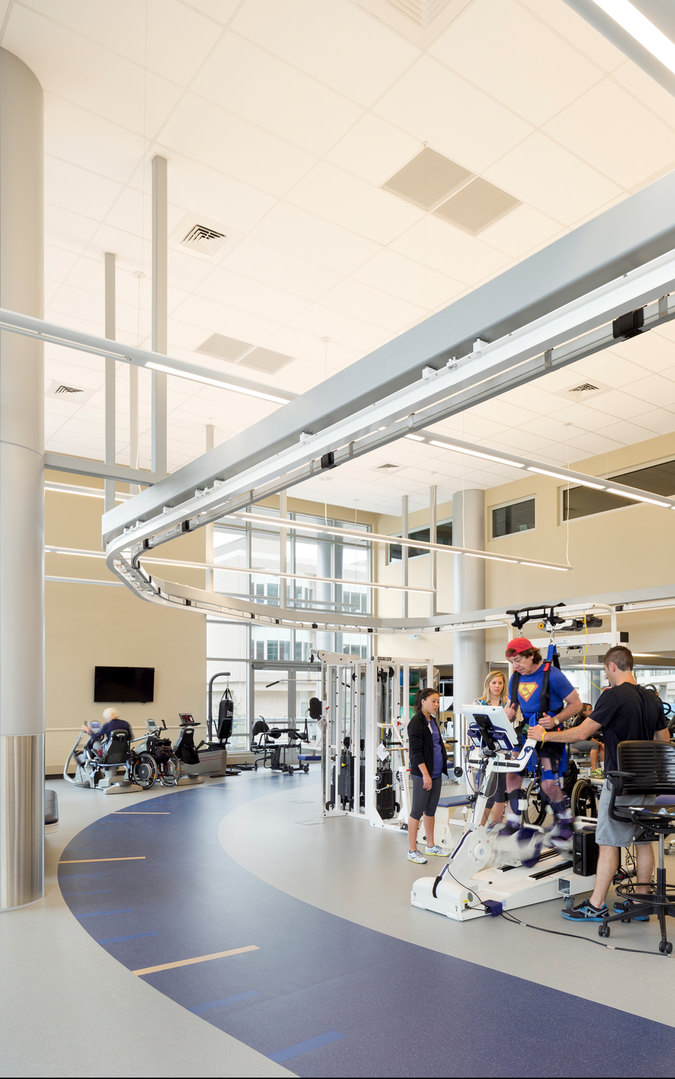Background in domestic rehabilitation medicine:
1. According to the clinical efficacy of early rehabilitation treatment for critically ill patients, through comparative experiments, early rehabilitation treatment for critically ill patients can reduce the incidence of pressure ulcers, mortality, and delirium, shorten mechanical ventilation time, ICU hospitalization time, and thus reduce hospitalization costs. From the data, we can clearly see that rehabilitation is very necessary, but why is it still often not mentioned in China's current rehabilitation? Let's continue to look further.
2. From the perspective of the people, there is still room for improvement in their understanding of rehabilitation medicine. The inherent concept of "emphasizing clinical practice and neglecting rehabilitation" has led to a lack of sufficient understanding of rehabilitation medicine, making it unable to be effectively utilized. The current understanding of rehabilitation medicine in society is mainly manifested as
(1) Not actively seeking medical attention due to the patient's weak understanding of the rehabilitation effect;
(2) The patient waited for the pain to heal themselves and missed the best recovery period;
(3) Clinicians have insufficient understanding of rehabilitation effects and do not guide patients to undergo rehabilitation after clinical treatment;
(4) The patient is willing to recover, but due to limitations such as medical insurance accessibility and payment pain points, the entire rehabilitation cycle was ultimately not executed or completed.


3. Insufficient supply of rehabilitation medical services: number of institutions, number of beds, and employees;
The Outline of the National Medical and Health Service System Plan (2015-2020) clearly states that bed allocation needs to be tilted towards nursing and rehabilitation beds in grassroots medical institutions, which has promoted the increase of rehabilitation subject beds. As of 2020, there were 246907 beds in the rehabilitation medicine department of Chinese hospitals, accounting for 3.5% of the total number of beds. However, there is still a gap of 1.5% between the 5% standard required by the "Basic Standards for Rehabilitation Medicine in General Hospitals (Trial)" and it needs to be filled. In addition, the proportion of rehabilitation medicine departments in tertiary and secondary comprehensive hospitals is 74.36% and 18.23% respectively, with gaps concentrated in secondary hospitals. The rehabilitation medicine departments in comprehensive hospitals have shortcomings in terms of department setting and building area. From a regional perspective, there are significant regional differences in the allocation of rehabilitation wards nationwide. There are more rehabilitation wards in economically developed areas than in underdeveloped areas, and the allocation of rehabilitation wards needs to be further balanced.

The failure of China's rehabilitation industry to usher in an outbreak is closely related to the supply of talent. According to the China Health Talent Network, the scale of various rehabilitation professional and technical talents in China in the future is around 1 million, with a current total of around 500000. Among them, there were 11015 registered rehabilitation therapists in 2017, which is unimaginable. The shortage of talent supply is mainly related to education. There are only 128 undergraduate majors related to rehabilitation therapy and sports rehabilitation in Chinese universities, with 219 in the United States, 280 in Germany, and 241 in Japan. In terms of master's and doctoral degree education, speech therapy experts are even more scarce in China.
With the rapid aging of the population and the increasing number of disabled patients, it is urgent to cultivate the awareness of national rehabilitation. Communities, medical institutions, mass media, governments, and other sectors need to work together to create a social atmosphere for national rehabilitation and raise awareness of national rehabilitation. This is the primary task of promoting the development of rehabilitation medical services.
How to develop?
1、 Advance the development concept of rehabilitation management
1. At present, the development of the industry is based on the International Classification of Functionality, Disability, and Health (ICF) signed by the World Health Organization as the basic concept of rehabilitation medicine. It proposes the concept of "early", "proactive", and "comprehensive" rehabilitation, and clearly recognizes the importance of "early detection", "early diagnosis", and "early intervention". "proactive" has shifted from passive training in the past to emphasizing stimulating patients' initiative and enthusiasm, and encouraging patients to actively train, Enhance patients' confidence in returning to society. Comprehensive rehabilitation should be carried out from the beginning of the injury and implemented throughout. Rehabilitation equipment is the foundation, systematic education is the means, and health intervention is the key, with the ultimate goal of achieving effective "health promotion".
2. We propose a department development strategy of "rehabilitation, education, and research" with "rehabilitation management" as the cornerstone, "treatment of dysfunction" as the core, "data-driven" as the guide, and "disciplinary construction" as the direction. Through improvement, compensation, and improvement of functional quality, we promote the integrated development of "evaluation, treatment, management, and promotion" through the process of the biological psychological social model. Realize the transformation from "centered on rehabilitation of obstacles" to "centered on comprehensive health".
2、 Create a development path for rehabilitation business
Construction concept:
Rehabilitation Center (Basic), Simulated Life Center, Psychological Rehabilitation Center, Co creation Center (Upgrade), Rehabilitation Business Information Management System, and Rehabilitation Information Integration Platform
1. Utilize resources managed by a comprehensive hospital to collaborate with various departments in rehabilitation management activities.
2. As the checkpoint moves forward, rehabilitation medical institutions gradually penetrate into communities, streets, schools and other living places, and rehabilitation concepts and related assistance also break away from the walls of the medical environment and become closer to people's daily lives.
3. People with physical and mental disabilities are the main audience group, but in reality, they often include sub healthy and healthy populations. The psychological rehabilitation center needs to be equipped with special treatment equipment such as transcranial magnetic stimulation, biofeedback, cognitive function treatment, immersion experience, etc., to provide comprehensive psychological diagnosis and treatment services. Establish a psychological assistance hotline, conduct in-depth publicity, mobilize and guide the public to care for mental health, gradually increase awareness of the importance of mental and psychological health rehabilitation, master basic stress regulation methods, achieve early detection and intervention, reduce and eliminate the sense of shame, and let the concept of "individuals are the first responsible person for their own mental health" deeply rooted in people's hearts.
4. Develop a rehabilitation business information management system for various rehabilitation institutions that can be connected to various HIS systems, and a network platform that can integrate rehabilitation service information of various rehabilitation institutions. While conducting online services and communication, establish an information database.
3、 The necessity of integrating rehabilitation medicine with social responsibility
Health is an inevitable requirement for promoting comprehensive human development, a fundamental condition for economic and social development, an important symbol of national prosperity and national prosperity, and a common pursuit of the general public. As the main body of the medical and health service system, public hospitals should play a major role in comprehensively implementing the new era health and health work policies, and implementing the Healthy China strategy, continuously meeting the multi-level and diversified medical and health service needs of the people.
In addition to macro policies, the country also gave guidance on specific implementation and strategies. At the beginning of July 2021, the NDRC official website news, the National Development and Reform Commission, the National Health Commission, the National Administration of Traditional Chinese Medicine and the National Bureau of Disease Control and Prevention jointly prepared the "Fourteenth Five Year Plan" Quality and Efficient Medical and Health Service System Construction Implementation Plan, which clearly defined the construction goals and improved China's health services for women and children, rehabilitation care Shortcomings in mental health and mental health services, occupational disease prevention and control, etc. (Four departments jointly issued a document: These hospitals will be transformed into rehabilitation institutions!)
Rehabilitation medicine has played an important medical, economic, and social role in the medical system. From a clinical perspective, rehabilitation medicine is a fourth type of medicine that ranks alongside preventive medicine, clinical medicine, and healthcare medicine. It plays an important role in the medical system - making up for the shortcomings of clinical medicine. Rehabilitation medicine is committed to eliminating and reducing human dysfunction, making up for and rebuilding human functional deficiencies, Efforts should be made to improve and enhance various aspects of human functions, including the prevention, diagnosis, evaluation, treatment, training, and management of functional impairments. Although medication and surgical treatment can directly treat pain, they cannot achieve functional recovery and must rely on rehabilitation medicine.
Medical value: Rehabilitation helps patients repair psychological and physical trauma, restore normal function, quality of life, and work ability. Patients receiving rehabilitation treatment can significantly improve their level of functional recovery and quality of life.
Economic value: Rehabilitation therapy can accelerate physical function recovery, reduce recurrence rate, reduce complications, and save overall treatment costs. After receiving rehabilitation treatment, the total cost significantly decreased and showed a monthly decreasing trend. Therefore, rehabilitation treatment is in line with the trend of controlling medical insurance costs.

Conclusion:
In response to the current development status of China's rehabilitation medical industry, combined with future demand and supply forecasts, China's rehabilitation medical industry will present five major development trends, namely the need for community rehabilitation, the trend of remote rehabilitation, the great potential of high-end rehabilitation, the obvious advantages of intelligent rehabilitation, and clinical medicine driving rehabilitation development.
Although rehabilitation medicine in China is accelerating its development, it is still in a relatively early stage, and there is a certain gap compared to developed countries in various aspects such as public awareness of rehabilitation, supply of rehabilitation medicine talents, and total rehabilitation resources. But we also need to see that with the development of society and economy, the continuous expansion of the middle class group, and the increasing awareness of people's rehabilitation, the development of rehabilitation medicine will be increasingly valued, and the future development space of the rehabilitation medical market will continue to expand.

Disclaimer: Some of the content and images in the article are cited from the internet, and the copyright belongs to the original author. If there is any infringement of copyright, please inform us and we will delete it in a timely manner!





